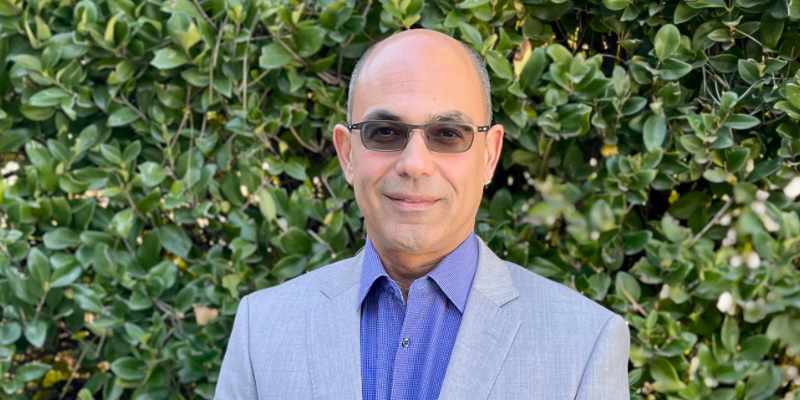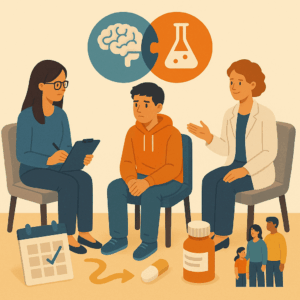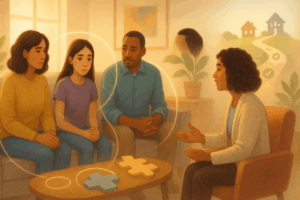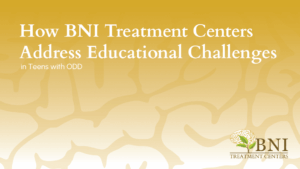When a teen has lived through trauma, the whole family feels it. Healing works best when care is evidence-based and family-centered. Parents and caregivers help most when they learn simple skills, set clear and kind limits, and support a steady routine at home and at school. The gold-standard therapy for Adolescent trauma treatment is Trauma-Focused Cognitive Behavioral Therapy, called TF-CBT, which includes parent sessions alongside the teen’s work.. Other supports, like the Child and Family Traumatic Stress Intervention, can reduce symptoms and help caregivers respond sooner after a traumatic event. In Greater Los Angeles, psychiatrist-led, adolescent-only programs with a full continuum and academic support can blend therapy with family teaching and safe step-downs. Read on to learn how to be part of treatment without taking over, how to set healthy boundaries, and how to make an aftercare plan that lasts.
What adolescent trauma treatment looks like
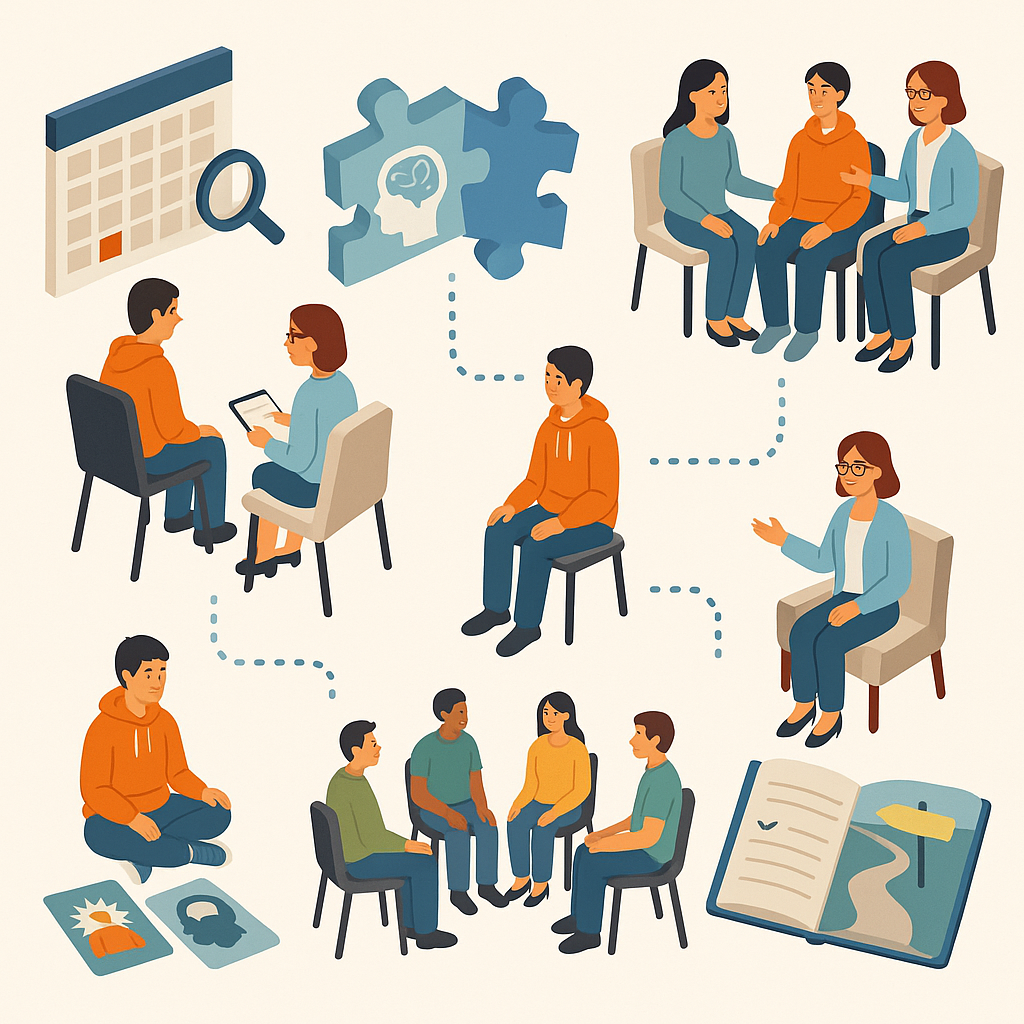
Adolescent trauma treatment should be safe, planned, and paced. The first step is a full assessment with a child and adolescent psychiatrist or a trained clinician. This includes a private interview with your teen and time with you. The team asks about trauma exposure, mood, anxiety, sleep, school, and safety. National child psychiatry guidance recommends that teen assessments include questions about trauma and post-traumatic stress symptoms, every time.
Many teens benefit from TF-CBT. It is a structured therapy with phases for stabilization, processing, and integration. A key part is parallel work with caregivers to teach skills and provide support at home. TF-CBT has strong evidence for youth ages 3 to 18 and includes conjoint sessions for caregiver and child when ready.
- Assessment should always include questions about trauma and safety.
- TF-CBT is evidence-based and includes caregivers, not just the teen.
- Treatment plans match the teen’s needs, school demands, and family culture.
Why family involvement helps
Teens heal faster when home and clinic speak the same language. Families can lower stress, reinforce skills, and model coping. The National Child Traumatic Stress Network notes that trauma affects the entire family system and that family engagement is a core part of trauma-informed care.
Family sessions teach calm communication, problem-solving, and praise. They also give space to repair trust. When caregivers learn what triggers look like and how to respond, conflicts decrease and safety increases. Early, brief caregiver-youth models such as CFTSI can reduce or even interrupt PTSD symptoms after a trauma by improving support and communication at home.
- Trauma touches the whole family, so treatment should include you.
- Early caregiver-child support reduces symptoms and fear.
- Small, repeated skills at home beat long lectures.
Boundaries that protect healing
Boundaries are clear lines that keep everyone safe and respected. Teens need both warmth and structure. In practice, that means you set house rules about sleep, school, screens, and safety, and you follow them in calm ways. This lets therapy skills stick. National resources for trauma-informed care highlight predictability, collaboration, and empowerment as key parts of safe care for youth and families.
Boundaries do not mean distance. They mean clear roles. Your teen does their part, and you do yours. You are the safety coach. You create a low-noise home at night, keep routines steady, and help with school plans. You do not force details your teen is not ready to share, and you protect privacy during calls or sessions, which builds trust and reduces shame.
- Make rules visible and simple, then keep them steady week to week.
- Use short check-ins instead of long interrogations.
- Offer choices when you can, but keep safety non-negotiable.
How to support between sessions
Support at home is not fancy. It is repeatable. It appears that good sleep, regular meals, exercise, and short study sessions are beneficial. National child mental health resources point families to daily routines as core supports for recovery and for attention and mood in teens.
You can also help your teen use therapy skills in real time. After a tough moment, try a brief reset: name the trigger, name the feeling, do one coping skill together, and then return to the task. Keep praise specific and small. Over time, these tiny reps build confidence and lower fear of the next wave.
- Protect bedtime, limit late screens, and keep mornings simple.
- Plan 10 to 20-minute study blocks with short breaks.
- Walking, stretching, or engaging in light exercise can help lower stress.
What happens in sessions and what you will learn
In TF-CBT and other evidence-based models, sessions teach skills for thoughts, feelings, and behaviors. Teens learn to notice triggers, challenge unhelpful thoughts, and practice regulation tools. Caregivers learn the same skills and how to coach them at home. Reviews show TF-CBT reduces PTSD symptoms for many youth, and caregiver participation is a core element of the model.
Some teens may also benefit from other options, such as EMDR, which the American Psychological Association lists as a suggested treatment for PTSD, or grief-focused components for youth with loss. The fit depends on clinician training and the teen’s needs.
- Expect skills practice, not only storytelling.
- Caregiver sessions teach you to coach without pushing.
- Ask which model is used and how your role fits each week.
Safety and privacy basics parents should know.
Safety first. If your teen has self-harm thoughts, ask directly and contact your care team. Your program should give you a written safety plan with warning signs, steps to take, and who to call after hours. In higher levels of care, the team also matches observation and environment to risk to lower self-harm opportunities, following national standards for youth safety in behavioral health settings..
Respect privacy too. Teens often share more when they know what will be kept private and what must be shared for safety. Federal guidance explains how mental health information can be shared with parents or caregivers under HIPAA and when confidentiality applies, which also varies by state and the care setting.
- Ask for a written safety plan and review it together.
- Clarify privacy rules with the team so everyone understands the plan.
- Balance your teen’s voice with your duty to protect.
Levels of care, family roles, and step-downs
Not every teen needs the same level of care. Some begin with weekly therapy. Others need more support first, such as residential treatment or a partial hospitalization program, then step down to intensive outpatient and finally to regular outpatient. Safe handoffs and clear plans between levels reduce errors and stress for families, so confirm the next start date before discharge and keep contacts handy.
In Los Angeles, BNI Treatment Centers serves adolescents aged 12 to 17 and offers a full continuum of care, including residential inpatient, PHP, and IOP, with on-site academic support. The program is psychiatrist-led and teen-specific, which aligns clinical leadership with school and family needs during step-downs.
- Match the level of care to safety and function, then step down with a written plan.
- Confirm dates, contacts, and after-hours numbers before every transition.
- Keep school supports active during and after each step-down.
Boundaries in action: scripts you can use
Boundaries work best when the language is short and kind. Here are examples you can tailor to your teen and culture.
When your teen is overwhelmed
“I can see this is a lot. Let’s pause homework for ten minutes. We will breathe together, get a drink of water, then try the first two problems.”
“This sounds painful. You do not have to tell me everything today. I am here. We have therapy on Tuesday. Would you like me to sit with you or give you space for now?”
When a rule must hold
“I hear that you want your phone tonight. Phones turn in at ten, so you can sleep. We can check messages in the morning. If you want, I can sit with you for five minutes while you get ready for bed.”
“I love you, and safety comes first. If you feel unsafe, please let me know so I can assist you. If I think you are unsafe, I will call our team.”
- Keep statements short and steady.
- Offer a choice when you can, not when safety is at risk.
- Pair limits with warmth so rules feel predictable, not punishing.
Your role during school and activities
School matters. Falling behind increases stress. Programs that include academic support help teens stay on track during care and return more smoothly. BNI has on-site academic support for teens during treatment and coordination with schools, which lowers fear about grades and credits.
At home, support study in small blocks, remove late-night screens, and coordinate with a school point person. Ask for simple accommodations like extra time or lighter loads during recovery. National child mental health resources encourage routines for sleep and study to protect mood and focus.
- Ask the program who they talk to at school and how often.
- Create a calm study space with short, timed sessions.
- Celebrate small wins, such as completing one task or passing one class.
Aftercare that lasts: what to plan before discharge
Aftercare is not an extra. It is the plan. Please write it down. Include appointments, meds if used, therapy homework, school contacts, and steps for nights and weekends. Add a relapse-prevention list that names warning signs, coping steps, and people to call. Federal care transition tools show that written plans reduce missed follow-ups and prevent gaps in care.
Keep family support going. Use simple check-ins: “Color of the day” for mood, a two-minute gratitude share, or a ten-minute walk after dinner. For families impacted by community or collective trauma, NCTSN offers caregiver guides with practical steps to manage stress and support children.
- Schedule therapy and psychiatry visits before discharge.
- Put the plan on one page on the fridge and in your phone.
- Review the plan weekly and adjust as stressors change.
Medication, if part of the plan
Some teens benefit from medication to treat depression, anxiety, sleep issues, or other symptoms that accompany trauma. That decision is personal and should be made with a child and adolescent psychiatrist who knows your teen. Your job is to ask questions, track benefits and side effects, and keep follow-ups on time. Always share any safety concerns right away.
Medication does not replace therapy. It can create more space for skills to work, especially when symptoms block sleep or attention. Keep communication open with the prescriber and the therapist so the whole team moves together.
- Ask what the medicine helps, how long it takes, and what to watch for.
- Use pill boxes or phone reminders to keep dosing steady.
- Bring school and sleep updates to every med visit.
When trauma and substance use occur together
Some teens use substances to numb fear or to sleep. This is common after trauma. The care team should screen for alcohol or drug use early and, if present, build one plan that treats both the trauma symptoms and the substance use. SAMHSA’s trauma-informed guidance encourages integrated plans, not parallel tracks, for co-occurring needs,
If the team recommends a higher level of care for safety or stabilization, ask how family work will continue and how step-downs will keep momentum. In Los Angeles, BNI lists teen-specific residential, PHP, and IOP that include family involvement and academic support, which helps with continuity during changes in level of care.
- One plan for trauma and substance use works better than two separate plans.
- Family sessions should be continued across all levels of care.
- Confirm dates and contacts for each step-down to prevent gaps.
How to choose programs and clinicians
Look for teen-specific settings with psychiatrist leadership and clear family roles. Ask which trauma model they use, how caregivers are included, and how progress is measured. NCTSN lists evidence-based adolescent trauma treatment and caregiver resources you can review before you call.
Suppose you are considering an adolescent-only, psychiatrist-led program in Los Angeles. In that case, BNI Treatment Centers provides teen PTSD treatment information and lists residential, PHP, and IOP levels with on-site academic support. You can review those pages to see how care, family involvement, and school supports are structured.
- Confirm the trauma model, family schedule, and outcome tracking.
- Ask who talks with the school and how often.
- Get after-hours instructions and safety steps in writing.
Frequently asked questions
Do parents attend every session?
Not always. In many models, caregivers have regular parallel sessions and some joint sessions. Your team will tell you how often and why. TF-CBT, for example, includes caregiver work by design because it improves outcomes.
What if my teen does not want to talk?
Start with skills. Teens often open up after they feel safer and more in control. Caregivers can still learn and coach skills at home while trust grows. NCTSN caregiver guides offer clear steps for support and school coordination.
Is EMDR right for teens?
It can help some youth. The APA guideline lists EMDR as a suggested treatment for PTSD. Fit depends on training, readiness, and the clinical picture. Ask your clinician how they decide and how parents are involved.
What if symptoms return during the school year?
This is common. Use your relapse plan. Call the team early. Stepping up sessions or adding brief intensive support can prevent bigger setbacks. A written transition plan keeps contacts and steps clear.
Ready to move from fear to a plan
You can be a powerful part of your teen’s healing. Learn one skill, set one boundary, and take one small step each day. Suppose you are looking for a psychiatrist-led, adolescent-only program that includes family work and school support in the Los Angeles area. In that case, you can review BNI’s teen PTSD and program pages, then request a private call to talk through fit and next steps. Call (888) 522-1504 to get help today.

